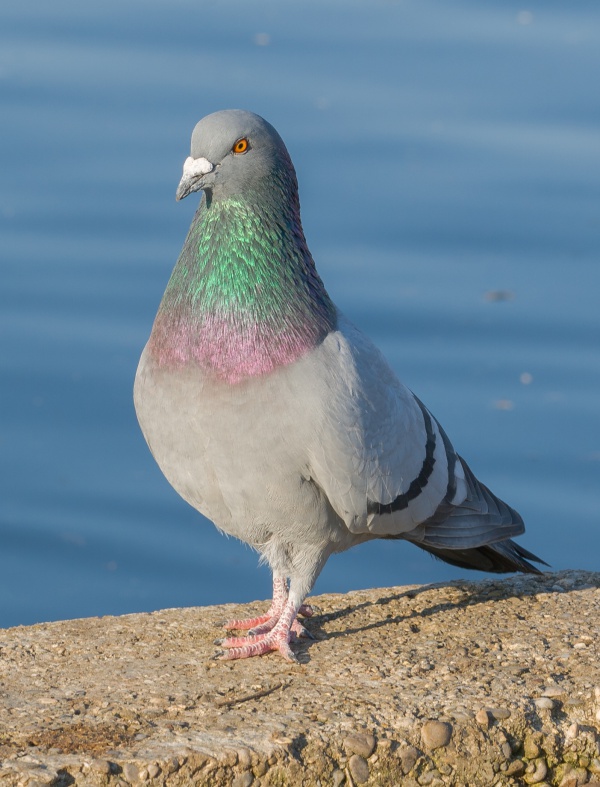Facts About Rock dove
The rock dove, commonly known as the rock pigeon, or simply pigeon, is a familiar bird belonging to the Columbidae family. Most pigeons seen in cities today are descendants of domesticated rock doves that escaped, forming feral populations worldwide. Wild rock doves typically display pale grey plumage with distinct wing bars, but domestic and feral pigeons exhibit a variety of colors and patterns. These birds typically form monogamous pairs, with both parents sharing the responsibility of raising their young.
Rock doves prefer open areas like cliffs and rock ledges for roosting and breeding. Originally native to Europe, North Africa, and western Asia, these birds have now settled in cities across the globe, numbering in the millions. They belong to the genus Columba, with several recognized subspecies.
These medium-sized birds are known for their distinctive features, including iridescent feathers on their necks and wings. They primarily feed on seeds but also consume small invertebrates. A notable behavior is their ability to drink continuously without tilting their heads back, a rarity among birds. Pigeons are also renowned for their homing abilities and are preyed upon by birds of prey in urban areas.
While pigeons are fascinating, they also pose health risks. Their droppings can spread diseases such as histoplasmosis and psittacosis. Nonetheless, pigeons have been domesticated for thousands of years, leading to various breeds used for homing, as a food source, and as pets. Feral pigeons, essentially domesticated birds that have reverted to the wild, are now a common sight in cities worldwide.
Rock pigeons have adapted well to urban life, including managing their diet and water intake efficiently. Unlike some bird species that rely on a salt gland for osmoregulation, pigeons use their kidneys to maintain balance. They also possess special adaptations that help them thrive in different environments, such as efficient gas exchange through their eggshells and mechanisms to minimize water loss.

 Guatemala
Guatemala